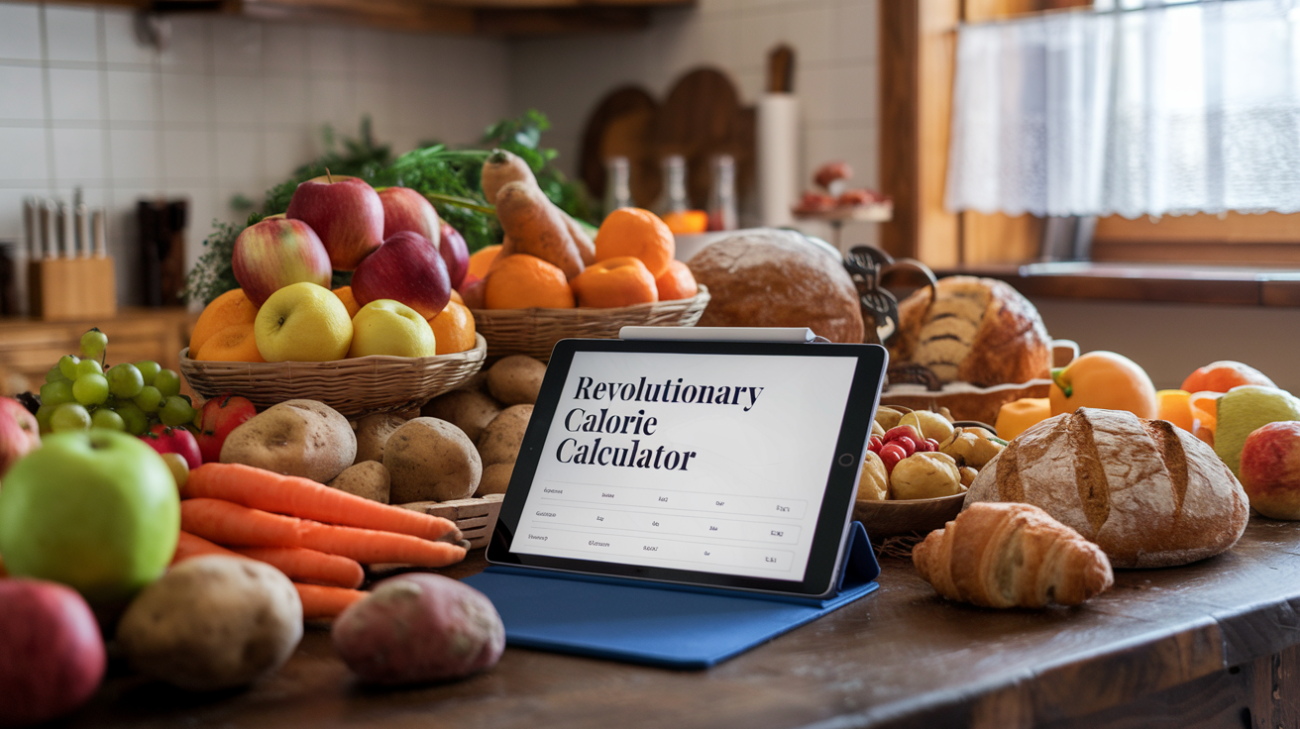
Credit to: Rosemary Ingado PA, a vivid vegetarian embracing simple nutritious meal plans and introducing AI creations in Medicine.
This image showcases a bountiful and vibrant vegetarian spread, perfectly capturing the essence of simple yet nutritious meal planning. The table is adorned with a diverse array of colorful and healthful options:
A centerpiece of wildflowers in a rustic jar adds a touch of natural beauty, surrounded by an impressive variety of dishes. Fresh vegetables dominate the spread, with plates of crisp cucumbers, bright carrots, and leafy greens. Colorful salads offer a mix of textures and flavors, while small bowls contain what appear to be various dips or dressings.
Protein sources are represented by hard-boiled eggs and an assortment of cheeses. For grains, there are baskets of crusty bread and rolls. Fruits add natural sweetness, with plates of tropical fruits and berries visible.
Several small bowls of soups or purées in different hues suggest a variety of flavored options. Glasses of water with herb garnishes provide refreshment.
The setting itself is inviting – a sunlit room with large windows offers views of greenery outside, creating a peaceful atmosphere for enjoying this healthful feast. This spread beautifully illustrates how a vegetarian diet can be both diverse and satisfying, emphasizing whole, unprocessed foods in a visually appealing presentation.
Tired of Counting Calories? Let AI Do the Work: Personalized Meal Plans
Introduction to Meal Planning
Meal planning is an essential strategy for maintaining a healthy diet and managing conditions like diabetes. With the advent of AI technology, creating personalized meal plans has become easier than ever. This guide will walk you through various meal planning options and provide you with the tools to make informed decisions about your diet.
Meal Planning Strategies
- Keeping a food diary
- Counting calories for weight control
- Monitoring carbohydrates for blood sugar control
Carbohydrate Counting
Carbohydrates are the main nutrient that affects blood glucose levels. If you follow a carbohydrate counting meal plan, you’ll focus on the carb content of foods. Here’s a quick guide to carb servings in different food categories:
- Starch
- Fruit
- Milk
- Other carbohydrates (sweets)
Calorie Meal Plans
Here are sample meal plans for different calorie needs:
| Calories per day | 1,200 | 1,500 | 1,800 | 2,000 | 2,500 |
|---|---|---|---|---|---|
| Starch (15g carb servings) | 5 | 7 | 8 | 9 | 11 |
| Fruit (15g carb servings) | 3 | 3 | 4 | 4 | 6 |
| Milk (12g carb servings) | 2 | 2 | 3 | 3 | 3 |
| Vegetables (5g carb servings) | 2 | 2 | 3 | 4 | 5 |
Food Exchange Lists
Food exchange lists help you create balanced meals by categorizing foods into groups with similar nutritional content. Here are the main food exchange categories:
- Milk
- Vegetables
- Fruit
- Bread/Starch
- Meat and Meat Substitutes
- Fats
Tips for Healthy Eating
- Choose lean meats and low-fat dairy products
- Incorporate a variety of fruits and vegetables
- Opt for whole grains over refined grains
- Control portion sizes
- Limit added sugars and saturated fats
Conclusion
With the help of AI-powered meal planning tools, you can easily create personalized meal plans that fit your nutritional needs and preferences. By following these guidelines and using food exchange lists, you’ll be well on your way to achieving your health and dietary goals.
Last Chance to Try Our Revolutionary Calorie Calculator
Description:
Introducing our cutting-edge calorie calculator designed to simplify your weight loss journey. This user-friendly tool provides personalized calorie recommendations based on your individual goals, height, weight, and activity level. Accurately track your daily intake and monitor your progress towards a healthier you.
Revolutionary Calorie Calculator
Revolutionary Calorie Calculator
Features
- Advanced tracking of macronutrients and micronutrients
- AI-powered personalized recommendations
- Interactive meal planning tools
- Educational resources on nutrition and healthy living
- Gamification features for motivation
- Integration with other health apps
Pros and Cons:
Pros:
- Personalized Recommendations: Tailored calorie goals based on individual needs.
- Easy to Use: Intuitive interface for effortless tracking.
- Accurate Calculations: Reliable calorie information for informed decisions.
- Progress Monitoring: Track your weight loss journey and stay motivated.
- AI-Powered: Benefits from advanced technology for optimal results.
Cons:
- Limited to Calories: Focuses primarily on calorie intake and may not address other nutritional factors.
- Requires User Input: Accurate data entry is essential for accurate results.
- May Not Account for All Factors: Individual variations and specific health conditions may not be fully considered.
Limitations of AI-Created Meal Plans:
- Lack of Personal Touch: AI-generated plans may not fully capture individual preferences or cultural nuances.
- Potential Errors: While AI is advanced, there’s always a risk of errors or inaccuracies in data processing.
- Limited to Available Data: AI can only consider the information provided, limiting its ability to account for unforeseen factors.
Future of AI Meal Plans:
- Increased Personalization: AI will likely become even more sophisticated, tailoring meal plans to specific dietary needs, allergies, and preferences.
- Integration with Health Devices: Seamless integration with wearable devices and health apps for a more holistic approach.
- Interactive Meal Planning: AI-powered tools may offer interactive features like recipe suggestions and virtual meal planning assistance.
AI-Generated Personalized Weight Loss Shopping List: For fresh organic produce; shop virtually with free prime delivery on Amazon.
Imagine a shopping list that automatically adjusts based on your personalized meal plan. AI could analyze your dietary needs and preferences, generating a list of ingredients tailored to your weight loss goals. This would save time, reduce food waste, and ensure you have everything you need for a successful week of healthy eating.

Revolutionary Calorie Calculator
Frequently Asked Questions (FAQs)
How accurate is this calorie calculator?
Our calculator uses advanced algorithms and personalized data to provide highly accurate estimates. However, individual results may vary based on factors such as metabolism and specific health conditions. We recommend consulting with a healthcare professional for the most precise guidance.
Can I use this calculator if I have specific dietary restrictions?
Yes! Our calculator takes into account various dietary preferences and restrictions. Simply select your dietary type (e.g., vegetarian, vegan, keto) and indicate any allergies or intolerances in the form. The calculator will adjust its recommendations accordingly.
How often should I recalculate my calorie needs?
We recommend recalculating your calorie needs every 4-6 weeks, or whenever you experience significant changes in weight, activity level, or health goals. Regular updates ensure that your nutrition plan remains optimized for your current situation.
Does the calculator consider my fitness goals?
Absolutely! The calculator factors in your health goals (lose, maintain, or gain weight) when determining your calorie needs. It also provides macronutrient recommendations tailored to support your specific goals.
How does the AI integration work?
Our AI system analyzes your inputs and compares them with data from successful users to provide more accurate and personalized recommendations over time. It also powers our natural language processing feature, allowing you to ask questions and receive tailored advice.
Is my data secure?
We take data privacy and security very seriously. All user data is encrypted and stored securely. We adhere to strict privacy regulations such as GDPR and CCPA. For more details, please refer to our data usage policy.
Can I integrate this calculator with other health apps?
Yes, we offer integration with several popular health and fitness apps. This allows for a more comprehensive health tracking experience. Check our integrations page for a list of compatible apps and setup instructions.
Revolutionary Calorie Calculator
Glossary
- Calorie
- A unit of energy. In nutrition, calories refer to the energy people get from the food and drink they consume, and the energy they use in physical activity.
- BMR (Basal Metabolic Rate)
- The number of calories your body burns while at rest to maintain basic life functions.
- TDEE (Total Daily Energy Expenditure)
- The total number of calories burned each day, including BMR and additional energy used for daily activities and exercise.
- Macronutrients
- The three main categories of nutrients that make up the majority of your diet: carbohydrates, proteins, and fats.
- Micronutrients
- Essential nutrients required in small quantities for normal growth and development, including vitamins and minerals.
- Ketogenic Diet (Keto)
- A high-fat, adequate-protein, low-carbohydrate diet that forces the body to burn fats rather than carbohydrates.
- Paleo Diet
- A dietary plan based on foods similar to what might have been eaten during the Paleolithic era, consisting mainly of meat, fish, vegetables, and fruit.
- Vegan
- A diet and lifestyle that excludes all animal products, including meat, dairy, eggs, and honey.
- Pescetarian
- A diet that includes fish but excludes other animal meats.
- Macro Tracking
- The practice of measuring and recording the intake of macronutrients (protein, carbohydrates, and fats) in your diet.
- Calorie Deficit
- Consuming fewer calories than your body burns, typically used for weight loss.
- Calorie Surplus
- Consuming more calories than your body burns, typically used for weight gain or muscle building.
- AI (Artificial Intelligence)
- In the context of our calculator, AI refers to the use of machine learning algorithms to analyze data and provide personalized recommendations.
- Intuitive Eating
- An approach to eating that relies on internal hunger and fullness cues rather than external rules or restrictions.

Eat the Rainbow! For a veggie powered recipe for brain health ; Download a copy here
Frequently Asked Questions: Tirzepatide, Semaglutide, and Oral Semaglutide for Weight Loss and Diabetes Control.
General Questions
What are these medications used for?
These medications are primarily used for:
- Type 2 diabetes management
- Chronic weight management in eligible patients
- Cardiovascular risk reduction (in specific populations)
How do these medications work?
- Tirzepatide: Works as a dual GIP/GLP-1 receptor agonist
- Semaglutide: Acts as a GLP-1 receptor agonist
- Both help regulate blood sugar, reduce appetite, and slow gastric emptying
Medication-Specific Questions
Tirzepatide (Mounjaro™, Zepbound™)
Q: What is the typical dosing schedule? A: Once-weekly injection, starting at 2.5mg and gradually increasing to target dose (up to 15mg)
Q: How much weight loss can I expect? A: Clinical trials show 15-25% average body weight loss over 72 weeks
Q: How long does it take to see results? A: Initial results often seen within 4-8 weeks; maximum benefits typically achieved over 6-12 months
Injectable Semaglutide (Wegovy™, Ozempic™)
Q: What’s the difference between Wegovy and Ozempic? A: Same molecule (semaglutide) but different FDA approvals and dosing:
- Wegovy: Approved for chronic weight management
- Ozempic: Approved for type 2 diabetes
Q: What’s the typical dosing schedule? A: Once-weekly injection, starting at 0.25mg and gradually increasing to target dose (up to 2.4mg for Wegovy)
Oral Semaglutide (Rybelsus™)
Q: How should I take the oral tablet? A: Take on an empty stomach upon waking with no more than 4 oz of plain water. Wait 30 minutes before eating, drinking, or taking other oral medications
Q: Why can’t I take it with food? A: Food interferes with absorption of the medication, reducing its effectiveness
Safety and Side Effects
Q: What are the most common side effects? A: Common side effects include:
- Nausea
- Diarrhea
- Vomiting
- Constipation
- Abdominal pain
- Decreased appetite
Q: How can I manage side effects? A: Management strategies include:
- Following the prescribed dose escalation schedule
- Eating smaller meals
- Avoiding high-fat foods
- Staying hydrated
- Communicating with healthcare provider about severe symptoms
Practical Considerations
Q: Do I need to refrigerate these medications? A:
- Unused pens should be refrigerated
- After first use, injectable pens can be stored at room temperature for up to 28 days
- Oral tablets don’t require refrigeration
Q: Can I take these medications if I’m pregnant or planning pregnancy? A: Not recommended during pregnancy or for women planning pregnancy. Discuss family planning with your healthcare provider
Q: Will insurance cover these medications? A: Coverage varies by:
- Insurance provider
- Specific plan
- Medical necessity
- Prior authorization requirements
Treatment Expectations
Q: How long will I need to take the medication? A: These are typically long-term medications. Discontinuation may result in weight regain or loss of glycemic control
Q: What happens if I miss a dose? For injectable medications:
- If within 72 hours: Take as soon as possible
- If more than 72 hours: Skip and resume next scheduled dose
For oral semaglutide:
- Skip missed dose and resume next day
Monitoring and Follow-up
Q: What monitoring is required? Regular monitoring includes:
- Blood sugar levels (for diabetes patients)
- Weight
- Kidney function
- Pancreatic enzymes
- Thyroid function (in some cases)
Q: How often should I see my healthcare provider? A: Typically:
- Monthly during dose escalation
- Every 3-6 months once stable on maintenance dose
- More frequently if complications arise
Lifestyle Considerations
Q: Do I still need to diet and exercise? A: Yes. These medications work best when combined with:
- Healthy eating habits
- Regular physical activity
- Behavioral modifications
- Adequate sleep
- Stress management
Q: Can I drink alcohol while taking these medications? A: Moderate alcohol consumption is generally acceptable, but:
- May increase risk of low blood sugar
- Can worsen gastrointestinal side effects
- Should be discussed with healthcare provider
Remember: This FAQ is for general information purposes. Always consult your healthcare provider for personalized medical advice.
Results
BMI Results
Your BMI:
Category:
Ideal Weight: kg

